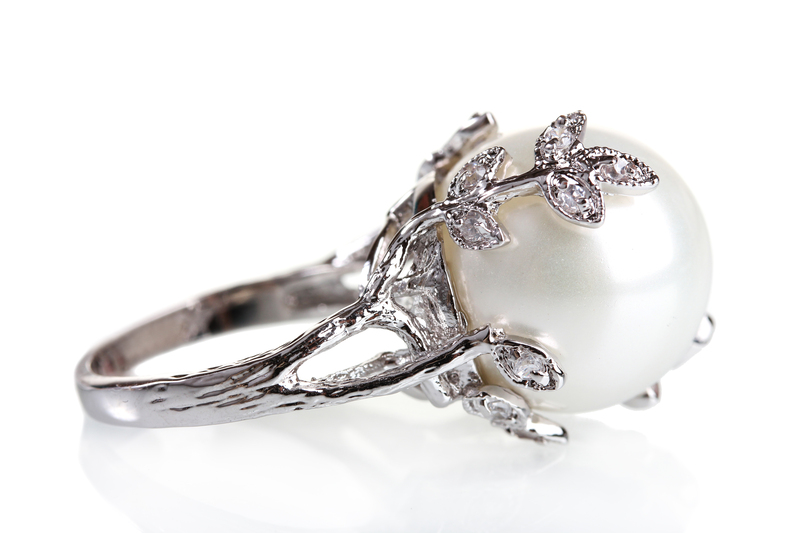Can Steam Cleaning Revive Your Leather Sofa? The Ultimate Guide
Leather sofas are a symbol of elegance and comfort in many homes, but maintaining their pristine condition can be a challenge. Over time, leather couches can accumulate dust, spills, and grime that diminish their luxurious appearance. Steam cleaning your leather sofa has become a popular method to refresh and sanitize upholstery. But does it really work, and is it safe for your leather furniture? In this comprehensive guide, we'll explore the ins and outs of steam cleaning leather sofas, discover its effectiveness, and provide expert tips on prolonging the life of your cherished furniture piece.

Understanding Leather: Types and Cleaning Requirements
Before delving into steam cleaning, it's essential to recognize that not all leathers are created equal. Leather upholstery comes in various types, each with specific cleaning requirements:
- Aniline Leather: This is the most natural and vulnerable type of leather. It absorbs stains and moisture quickly due to its open pores and lacks protective coatings.
- Semi-aniline Leather: Slightly more resistant, it features a thin protective layer which offers better stain resistance while retaining the natural texture.
- Pigmented Leather: Coated with pigments and polymers, this leather type is the most durable and easiest to clean, making it suitable for households with children or pets.
It's crucial to identify your sofa's leather type before opting for any cleaning method, including steam cleaning.
What Is Steam Cleaning?
Steam cleaning utilizes water heated to a high temperature to create vapor, which is then released through a pressurized nozzle. This steam helps loosen dirt, kill bacteria, and remove grime from various surfaces. Steam cleaners are often used for deep-cleaning carpets, tiles, and certain types of fibers, but their application on leather surfaces is a topic of debate among professionals.
How Does Steam Cleaning Work?
- Heats water to produce high-temperature steam
- Applies steam through a controlled nozzle or attachment
- Loosens embedded dirt and kills dust mites, bacteria, and allergens without chemicals
- Requires subsequent wiping or drying to remove moisture and residues
Is Steam Cleaning Safe for Leather Sofas?
While steam cleaning offers incredible cleaning power for many materials, leather is a sensitive and porous surface that requires gentle treatment.
- Heat Sensitivity: Excessive heat can dry out natural oils in leather, leading to cracks and fading.
- Moisture Risk: Leather absorbs moisture, which may cause mildew, warping, or permanent damage if not dried quickly and thoroughly.
- Protective Coatings: Aggressive steam pressure may strip protective finishes, diminishing the sofa's resilience.
Though professional-grade steam cleaners may have settings suitable for delicate materials, it is generally not recommended to use standard steam cleaning on leather sofas. If you choose to proceed, always use the lowest heat and moisture settings, and test on a hidden area first. For most homeowners, alternative cleaning methods offer a safer approach.
Benefits of Steam Cleaning Leather Sofas
Despite the precautions, can steam cleaning revive your leather sofa? When performed with care, steam cleaning can offer several advantages:
- Deep Cleaning: Steam penetrates surface dirt and eliminates grime that routine dusting can't reach.
- Sanitization: The high temperature kills germs, bacteria, and dust mites, ensuring a hygienic surface.
- Eco-Friendly: Steam cleaning uses only water, avoiding harsh chemicals that may damage your sofa or harm indoor air quality.
- Odor Removal: Steam removes lingering smells such as pet odors, tobacco smoke, or food spills.
However, these benefits must be weighed against the potential risks to leather integrity.
Drawbacks and Risks of Steam Cleaning Leather Sofas
While the benefits are appealing, there are significant risks associated with steam cleaning leather furniture:
- Drying and Cracking: Steam can strip natural oils, causing the leather to lose flexibility and crack over time.
- Mildew and Mold: Trapped moisture inside the leather can foster the growth of mold spores, leading to unpleasant odors and structural damage.
- Peeling and Discoloration: Excessive heat can cause pigmentation to fade or peel, especially in lower-quality or untreated leather.
- Loss of Protective Finish: Steam may erode surface coatings, leaving the sofa vulnerable to stains and wear.
Professional cleaning services may use specialized equipment designed for leather, but DIY enthusiasts should proceed with extreme caution.
Alternative Ways to Revive Your Leather Sofa
1. Regular Dusting And Vacuuming
Use a soft, dry cloth or a vacuum cleaner with a brush attachment to remove surface dust and debris weekly. This prevents the buildup of abrasive particles that can scratch the leather.
2. Gentle Soap Solution Cleaning
Mix a small amount of mild, moisturizing soap with distilled water. Dampen a soft cloth (never soak it) and gently wipe the sofa, focusing on heavily used areas. Finish by drying the surface with a clean, dry cloth.
3. Leather Conditioners
Use a high-quality leather conditioner every six months to replenish the sofa's natural oils, maintain suppleness, and prevent cracking. Choose products specifically formulated for your leather type.
4. Spot Cleaning Stains
For minor spills or stains, blot (don't rub) the affected area with a clean, dry cloth. Use a specialized leather cleaner if necessary, always following the manufacturer's instructions.
5. Professional Leather Cleaning
For significant dirt buildup, tough stains, or long-term care, hiring a professional leather cleaning service may be the safest and most effective solution. Professionals use targeted products and restoration techniques suited for delicate leather surfaces.
Can Steam Cleaning Revive Your Leather Sofa? Expert Advice
Whether steam cleaning can revive your leather sofa depends on several factors:
- Leather Quality: High-quality, pigmented leather may withstand gentle steam cleaning with minimal risk, while aniline or semi-aniline leather is more susceptible to damage.
- Machine Settings: Steamers with adjustable heat and moisture settings reduce the risk of over-saturating the leather.
- Frequency: Occasional steam cleaning (no more than once or twice a year) may be tolerable, but excessive use shortens the lifespan of the leather.
- Immediate Aftercare: Promptly drying and conditioning the sofa after steam exposure is critical to restoring lost moisture and oils.
In summary: While steam cleaning may help remove surface dirt and refresh certain leather sofas, it poses a risk of long-term damage, especially to untreated leather. The safest method remains regular dusting, gentle cleaning, and proper conditioning, supplemented by professional cleaning services as needed.
Step-by-Step Guide: How to Steam Clean a Leather Sofa (If You Must)
If you decide to try steam cleaning your leather sofa, follow these steps to minimize risks:
-
Test a Small Area:
Always start on a hidden section of the sofa to check for harsh reactions such as discoloration or texture change. -
Select Low Heat and Moisture:
Set your steam cleaner to its gentlest settings. Attach a microfiber cloth or towel to the head to diffuse the steam. -
Keep the Nozzle Moving:
Glide the nozzle quickly over the surface without lingering. Avoid saturating any section with prolonged steam. -
Wipe Away Residue Immediately:
As you clean, use a separate dry cloth to absorb moisture and dirt dislodged by the steam. -
Allow to Air Dry:
After cleaning, let the sofa air-dry in a well-ventilated room. Avoid direct sunlight or heat sources. -
Condition the Leather:
Once completely dry, apply a nourishing leather conditioner to restore suppleness and shine.
Frequently Asked Questions: Steam Cleaning and Leather Sofas
Can Any Type of Leather Sofa Be Steam Cleaned?
No, delicate or untreated leathers (aniline, suede, or nubuck) should never be steam cleaned. Only robust, pigmented leathers may withstand occasional gentle steaming, and always with caution.
Will Steam Cleaning Remove Odors from My Leather Couch?
Yes, steam can help eliminate bacteria and odors, but ensure the sofa is completely dried afterward to prevent musty smells from mildew.
Should I Use Chemical Cleaners with Steam?
No, avoid mixing steam with chemical cleaners on leather. The combination could lead to unpredictable reactions and damage.
How Often Can I Steam Clean My Leather Sofa?
Limit steam cleaning to once or twice a year at most. Overuse can deplete oils and degrade leather appearance and quality.

Leather Sofa Care: Tips for Prolonging Life and Beauty
- Keep sofas away from direct sunlight or heat sources to prevent fading and drying.
- Use a leather conditioner every six months for softness and protection.
- Avoid harsh cleaning agents (bleach, ammonia) and excessive water.
- Blot spills immediately; never rub.
- Rotate cushions for even wear.
- Schedule professional cleaning every 18-24 months.
Conclusion: Is Steam Cleaning the Best Way to Revive Your Leather Sofa?
The prospect of steam cleaning your leather sofa for a deep and thorough refresh is undoubtedly enticing. But while steam can effectively lift dirt and reduce germs, its drawbacks--loss of oils, increased risk of drying, cracking, and potential damage to delicate leathers--mean caution is always warranted.
To truly revive your leather sofa, stick to gentle cleaning solutions, regular maintenance, and professional-grade conditioning. Use steam cleaning as a last resort and only on robust, treated leathers, following all safety precautions.
By taking a proactive approach to upholstery care and understanding the pros and cons of each cleaning method, you can extend the life, comfort, and beauty of your favorite leather furniture for years to come.


